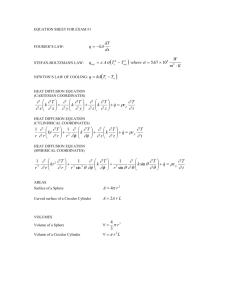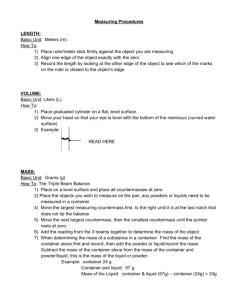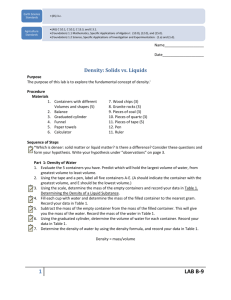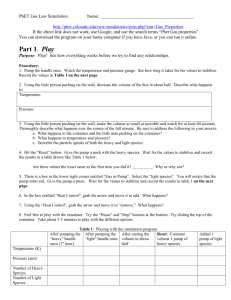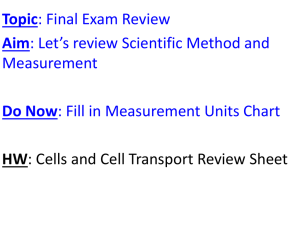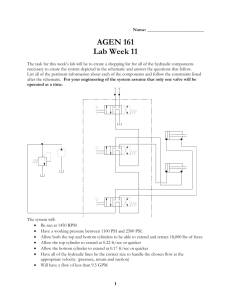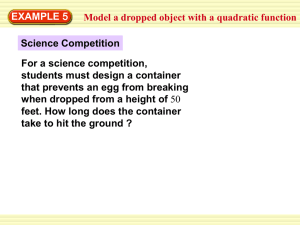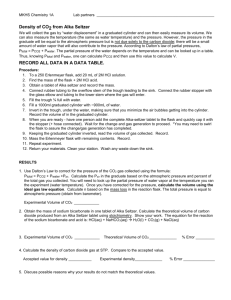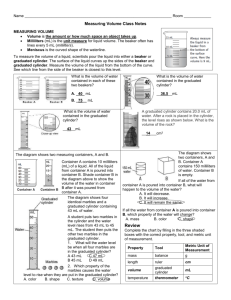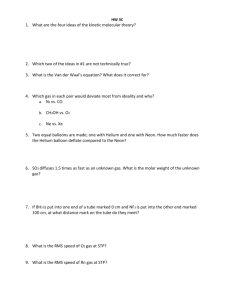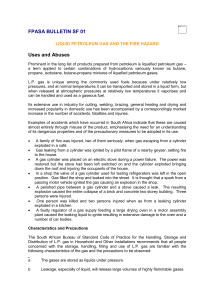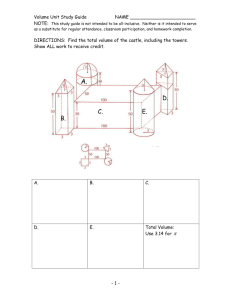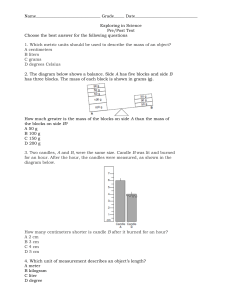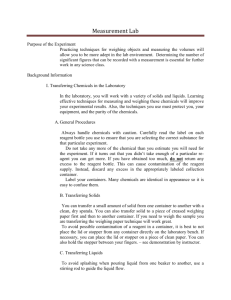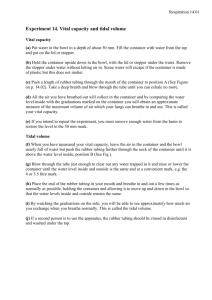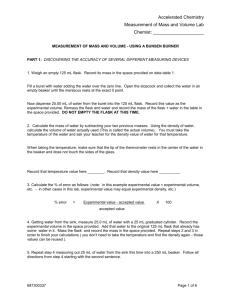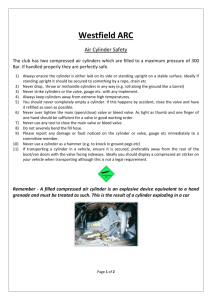TAP 601-3: The density of air
advertisement
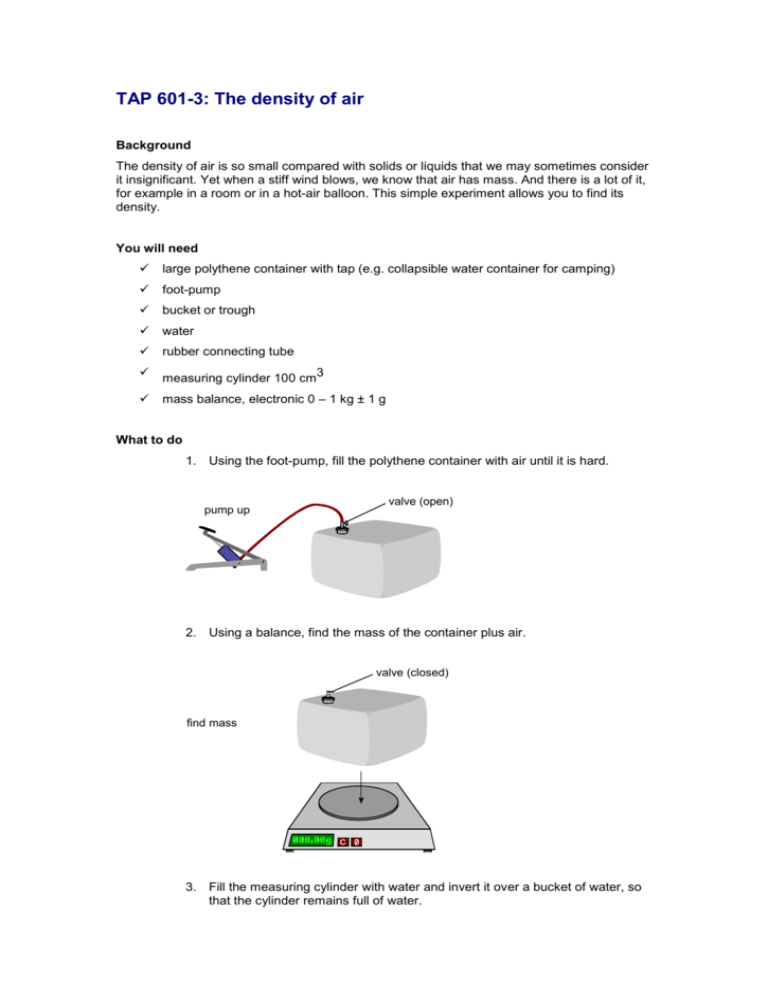
TAP 601-3: The density of air Background The density of air is so small compared with solids or liquids that we may sometimes consider it insignificant. Yet when a stiff wind blows, we know that air has mass. And there is a lot of it, for example in a room or in a hot-air balloon. This simple experiment allows you to find its density. You will need large polythene container with tap (e.g. collapsible water container for camping) foot-pump bucket or trough water rubber connecting tube measuring cylinder 100 cm 3 mass balance, electronic 0 – 1 kg ± 1 g What to do 1. Using the foot-pump, fill the polythene container with air until it is hard. pump up valve (open) 2. Using a balance, find the mass of the container plus air. valve (closed) find mass 3. Fill the measuring cylinder with water and invert it over a bucket of water, so that the cylinder remains full of water. 4. Release excess air from the container until it is again at atmospheric pressure, finding the volume released. This can be done by bubbling the air through the connecting tube and into the measuring cylinder. If the cylinder becomes completely filled, use repeat fills to find the total volume of air released. find volume valve (open) 5. Find the mass of the container plus remaining air. The difference between this mass and the mass found earlier is of course the mass of the released air. 6. Use the mass and volume of air released to calculate its density. 7. Explain why it was necessary to release the air into the measuring cylinder, rather than simply finding the volume of the plastic container. You have shown 1. That the density of air is about 1.2 kg m –3 or 0.012 g cm –3 . Practical advice This is a quick and easy experiment, which gives good results. If students have not previously seen an experiment to determine the density of air, then it is valuable for them to see one. Alternative approaches You might use a vacuum pump to evacuate a 500 ml round-bottomed flask. The flask should have a one-hole bung and pressure tubing capable of being sealed with a Hoffman clip. Find the mass of the flask plus air before and after evacuation. By opening the Hoffman clip while the tubing is submerged in water, the volume of evacuated air can be found. It is the same as the volume of water entering the flask. You will need a safety screen for this experiment. The experiment using the plastic container described above is preferred because it leads to a result more simply, and can be done by a student. Social and human context Through mining experience, it had been known since ancient times that no pump could lift water higher than 32 feet. Only in the seventeenth century, starting with Galileo’s thinking, was this linked to the fact that air has weight and exerts pressure. Thus the mental picture was transformed from sucking water up to using atmospheric pressure to support a column of water. External reference This activity is taken from Advancing Physics chapter 13, 10E
